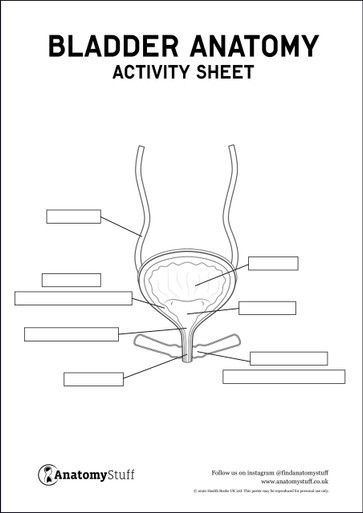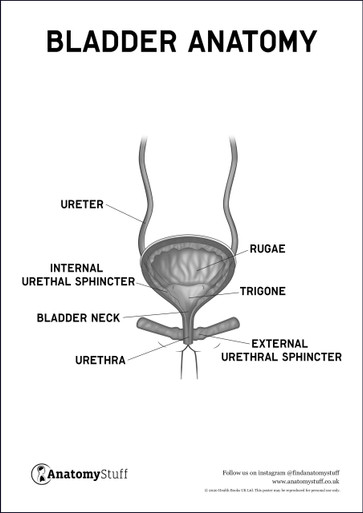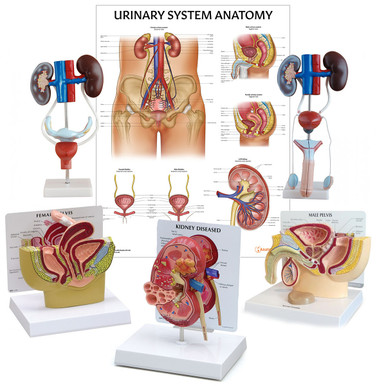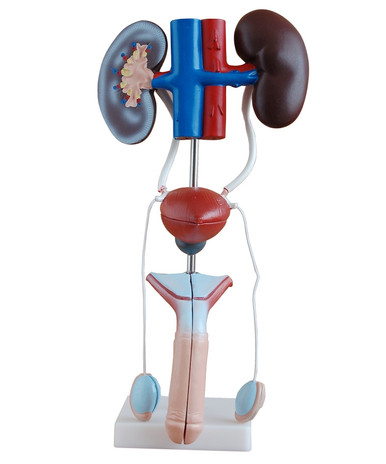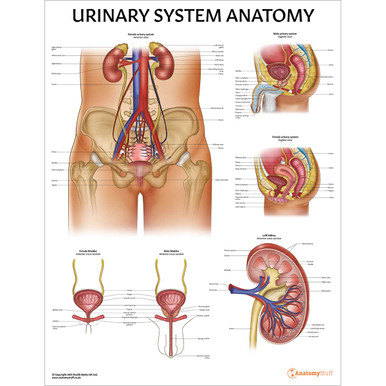Written by: Liz Paton, MSc
Kidney & Urinary System Overview
The urinary system filters our blood and removes waste products from our bodies by producing urine. The general anatomy that makes up the urinary system consists of the kidneys, ureters, bladder and the urethra.
The Kidneys
The kidneys play a very important role in our health, undertaking tasks from regulating your fluid levels and blood pressure to balancing the number of minerals in your blood. The kidneys return vitamins, amino acids, glucose and hormones back into the bloodstream. The kidneys are also able to alter their filtering process to excrete more concentrated urine if one has not drunk enough liquid.
The kidneys are reddish-brown, bean-shaped organs that are about the size of a clenched fist. They are located in your abdomen, protected by the last two pairs of ribs as well as perirenal fat and muscle. The left kidney sits slightly higher than the right kidney.
Each kidney is made up of filtering units called nephrons. A nephron is the functional unit of the kidney, responsible for filtration, excretion and selective resorption of substances such as ions, amino acids and glucose. The nephrons are located in the renal cortex and the renal medulla.
The renal cortex makes up the space between the fibrous capsule of the kidney (outer most kidney, also known as the renal capsule) and the renal medulla. It contains the glomerulus and tubules of the nephrons.
The renal medulla is a pyramid-shaped structure found in the inner-most region of the kidney, containing the collecting ducts of the nephrons. The renal papilla is where the renal pyramid in the medulla empties urine into the minor calyx of the kidney. The medulla is surrounded by the renal cortex.
The renal pelvis is the point where the calyces join together and funnel urine into the ureter.
Blood enters the kidney through the renal artery and exits through the renal vein. A duct called the ureter is attached to the kidney through which urine travels down into the bladder.

Urination
Urination is a complex process facilitated by our kidneys and bladder. The ureters attached to each kidney extends down to the bladder, and urine is then released through the urethra.
Micturition, the act of urinating, is regulated by our nervous system and the muscles of our bladder and urethra. Micturition is triggered by stretch receptors when the bladder is full of urine and the detrusor muscle, which surrounds the inner wall of the bladder, contracts. This causes the internal urethral sphincter to relax and for urine to pass through the bladder into the urethra.






